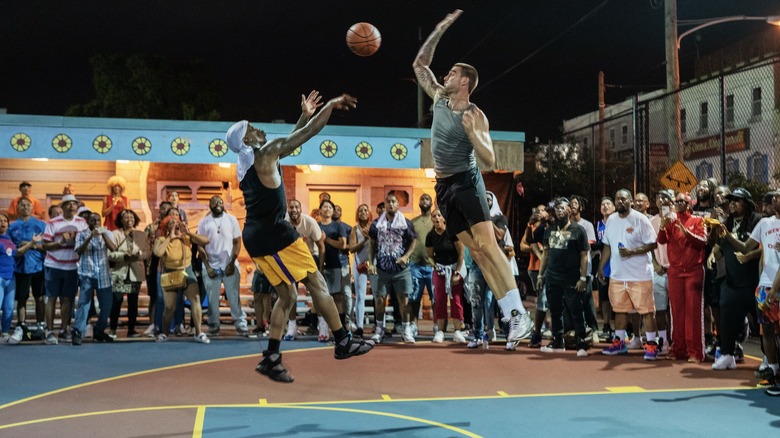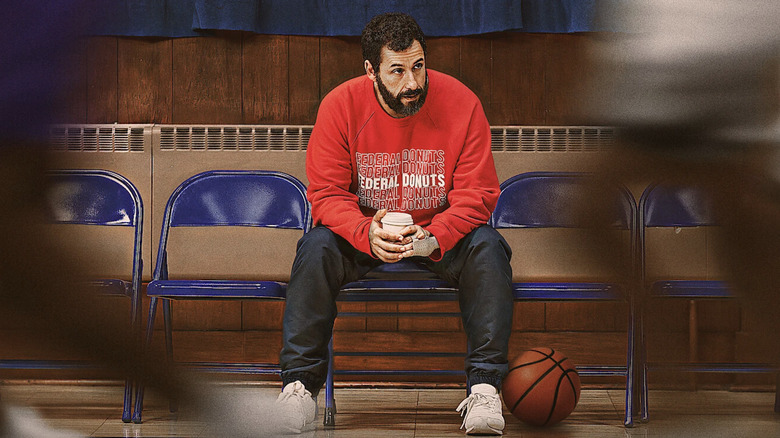Hustle Had To Find A Brand-New Way To Get Basketball On Film
Funnyman and diehard basketball fan Adam Sandler takes another venture into serious dramatic territory in the new Netflix film "Hustle," where he plays Stanley Sugarman, a longtime international talent scout for the Philadelphia 76ers. Sugarman has been vying for the chance to pivot into a coaching career for years. But after the team's owner passes away and is replaced with Vince Merrick (Ben Foster), with whom he's never seen eye to eye, he's put on the road and tasked with finding the next great star player or stay a scout forever. It's a lot like "The Air Up There," but without the blatantly racist stereotypes or weird themes of cultural imperialism. "Hustle" is not without its equally tired themes of underdog sports movies, but with director Jeremiah Zagar ("The Fix," "Starved for Attention," "We The Animals") at the helm, "Hustle" provides plenty of refreshingly good updates.
One of the most noticeable updates is the way the basketball scenes were shot. Zagar and "Hustle" cinematographer Zak Mulligan wanted to break the traditional approach of how basketball is shot, allowing the moments to appear more cinematic and less primetime TV. "When you watch a basketball movie, usually, a lot of them are with actors and so the way they shoot with the ball is from the outside in," Zagar said in an interview with IndieWire. "You shoot it like you shoot the NBA, which has a lot of cool different angles. They'll do specials and a couple closeups of the net." Instead of following traditions, Zagar and Mulligan created a multi-day approach to shooting the games, providing "Hustle" its unique look.
Capturing the language of the game
According to the IndieWire interview, they first shot each game in what was called "Stanley Vision," or through the coach's perspective by using a long zoom lens. Editors cut the game together in real time. The following day, the game would be shot from the perspective of star player Bo Cruz (Juancho Hernangómez), and the editors would cut each perspective together to shape the full world of the game. "One of the cooler things are the in-between moments when the players are breathing heavily," Jeremiah Zagar told IndieWire. "When we started to get those moments, I started to know it was going to work."
To capture such differing perspectives, according to the IndieWire interview, the team used everything from an e-car with a crane attached and a TARO auto tracking camera rigged to a remote car that could run down with the players and weave as necessary. The team also borrowed a page out of Martin Scorsese's handbook in "Raging Bull," by attaching a pole to the players so they could play the game while a camera was focused on them. "It was so weird for them at first," Zagar said. "But once we had buy-in and they understood what we were doing, they were really amenable to it." At the end of the day, the editors would provide cuts of game footage to allow Zagar, Mulligan, and Sandler the chance to plan out which elements were missing, and make sure a second-unit team would be prepared to capture the necessary footage.
The cinematic results? A slam dunk.

